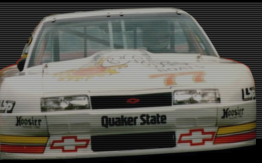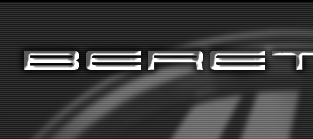|
 |
January 9, 2026
Information
Porting the Intake Manifolds of a Gen I, II, or III 60 Degree V6
Last Updated: June 22, 2003
Disclaimer: This article is meant to educate, inform, and help those who are capable of doing this task themselves. If you are a beginner or are not sure if you can do this, DON'T! Have a professional do it, or a mechanically inclined friend help you with it. By using my article to assist you in any project you do, you are not holding me responsible for any damage done to your engine or yourself. Follow all safety precautions, take it slow, and do a good job.
Definitions
Porting - process of removing material
Port matching - removing material to match up different pieces
Polishing - smoothing metal to allow air to flow more smoothly
Introduction
The problem with mass production, is that the ports on your exhaust/intake manifolds and your head(s) never seem to match up right, they're probably even shaped differently, and this impedes flow, and costs HP so when porting (port matching) you want to have a good (if not great) idea how the ports match up when the pieces are assembled. Then you want to remove ONLY the metal that is "overlapping" between the two pieces. You also want to have consistency between all of the cylinders. (i.e. if you do it to one, do it to them all). The other aspect of this is polishing. This is the most sensitive, because there are some areas you want to smooth out, but there are others you want to leave rough. I am by no means an expert on this subject, but hopefully it will be a help as to let you know what the port/polishing thing is all about. On Berettas, it has the most bang for the buck next to nitrous, on ALL the engines. I recommend having a professional do it, they have the best equipment, and it's definitely worth the money, but if you feel you can pull this off yourself, then by all means give it a try. Make sure you take your time....DO NOT rush to get this done, as the results will not be as great. You can use this information to port any heads or exhaust manifolds if you want to, but heads are much different than intake runners so I recommend having a professional do them.
What kind of power gains can be expected from this? Well, assuming you do a good job, you can expect a 0.2-0.25 second gain in the 1/4 mile (as I did). Your powerband will shift upward, so you will have much more high-end power, but you will lose a little low-end. My 2.8, for example, had a HP peak at 4500rpm. Now, (and this is just an estimate) it peaks at somewhere between 4900 and 5100rpm, with much more power than I had at 4500 before all of this. The power now drops off at about 5200rpm.
Some great resources for more information:
· 60degreev6.com
· www.sa-motorsports.com/diyport.htm
· BStuff.com Message Board
· Beretta.net's Message Board
Step 1 - Materials and Tools
There are several things you can use to do your own port and polish project and it all depends on how extensive you want to go. A Dremel will not cut it for porting - t's good for polishing and getting those hard to reach places, but for the main job, it's useless. You'll want something like a die grinder for the rest. I used an air die grinder, which has to be the best tool for the job (especially considering pros use the same thing).
As far as bits are concerned, it all depends on what kind of material you are removing. If you are working on cast iron, you want bits made for cast iron. The same goes for aluminum. If you use the wrong bit, it will clog and become useless. Carbide made for aluminum will last a long time, and just tears right through aluminum. This is what I used, but you have to be careful that you don't let it stay in one spot for long as it will remove metal very quickly. Sanding rolls are the best way to smooth the metal, and can be reused.
Step 2A - Porting
This is the fun and most difficult part. When porting, you want to consider two things about air: the first is the amount of air you want to flow, which obviously you want to be higher, and the velocity at which it travels. I did not realize how important this was when I did my porting. If you have curves, bends, twists, or obstructions, it will cause turbulence and you will lose velocity. Why is this important? Well, at higher RPMs, air is constantly flowing through your intake runners at a certain speed. The vacuum created by the pistons is what causes this. Since the air is already flowing, it is essentially "helping itself" flow into your combustion chamber. Think of it this way: turn on your kitchen faucet. Feel and observe the force at which the water hits the sink. Now, use your hand to re-direct that water, just a little bit. You'll notice the water has lost some of its speed, or velocity. Consider that when porting.
Unless you have some blueprints or a perfect idea of EXACTLY what material you will remove, you need to take this simple piece of advice into consideration. Imagine you are the air. I shaped my runners more like the Gen III, tubular. The Gen I and II are windy when it comes to design, changing shape and twisting. I tried my best to get rid of that and to have some consistency, and to ease the transitions a little more.
Another important thing to remember is manifold integrity. You'll be bolting these to other metals with a good amount of torque, and the last thing you want to do is have them break. Make sure you don't weaken the area where the bolt holes are too much, as they could crack. Don't make the metal too thin, since you could very well put a hole into a runner (which is what I did in the very beginning).
Step 2B - Port Matching
This is one of the top priorities as far as porting goes. Since the intake manifolds on our engines are mass produced, they often don't line up perfectly with one another. This causes turbulence and impedes airflow. The primary way of ensuring these components line up properly is by gasket matching. This is done by holding the gasket onto the manifold you are porting, and use a marker to color what parts "stick out" from the gasket. You do the same thing to the other manifold. If you will be enlarging the runners, enlarge them, then modify the gasket, and do the gasket match. If you can get them perfectly shaped, that's great. If not, then the backup way is to make sure that the runners get larger as you switch to another component. There is less turbulence this way, and the air has less chance of going back into the runner and swirling. For more information, see www.60degreev6.com's article on
this.
Step 3 - Polishing
The major misconception on polishing is that you should polish everything. This is untrue. If fuel goes past it, you want to have a rough finish. If you smooth the metal, the fuel will come out of atomization (suspension) and drip along the runner and head, which isn't good for performance or engine life. You can do whatever porting you want in those areas, just make sure you go over it with some coarse stones (sandpaper). Everything before the injectors is fine to polish. To polish, you can use a fine grit sanding disc or stone made for aluminum. I have found a Dremel is the best tool for this job, since it is more versatile and you can easily modify the speeds.
Step 4 - Finishing up
Make sure you go over all your work when you are finished. You want all of the runners to be identical in length and geometry. Once you do that, I recommend cleaning all of the metal filings out by hosing it out and letting it dry. Just a few metal filings leftover can get into
the cylinders and score them up pretty badly.
Step 5 - Installation
It can be very complex when it comes to installing, and instead of re-writing what's already out there, the best instructions can be found in a Chilton's manual on your car. It tells the order in which to remove different components, and has torque specs. Follow those directions closely. I'll just give you a few tips that will help out. First, make sure you buy a good intake manifold gasket. Felpro is the best brand, and I recommend them to anyone. Don't go cheap on installation. Make sure you do it right the first time or you'll have problems. Make sure you silicone everything the instructions tell you in the box the gasket set came with, using the correct amount. Don't rush to get everything installed, because chances are you'll forget something or do a bad job. You don't want to have to take it all apart and start over, do you? Label everything! Use ziploc bags and a marker to keep all your screws and bolts together. At first I kind of laughed at that idea, but I would have had major problems putting everything back together if I hadn't used them. DO NOT, I repeat DO NOT get any dirt into the block. This will do major damage to your engine over time. Make sure you use clean, lint-free rags when cleaning off any oil and old gasket material. I recommend bumping your oil change up a thousand miles just to be safe. Think ahead when putting everything back together. it took me and my friend an hour just to get the rear valve cover back on, because we didn't think about putting it in that area before bolting the intake manifold back on. We had to remove some other things just to get it back there.
That should do it. When you start it up, it may take a few seconds to crank since you have removed all the fuel in your fuel lines. Your ECM also has to reset itself, so do a proper idle relearn before driving it anywhere (yes, that's hard, but needs to be done). If you have an SES light, you may have forgotten to connect a wire, or you may have a vacuum leak (this is why you do it right the first time). After you have done the idle relearn, you're free to take it for a ride! Good luck, and have fun!
Pictures
contributed by: Anonymous Contributor
5132 views
|
|
 |
 |
|



